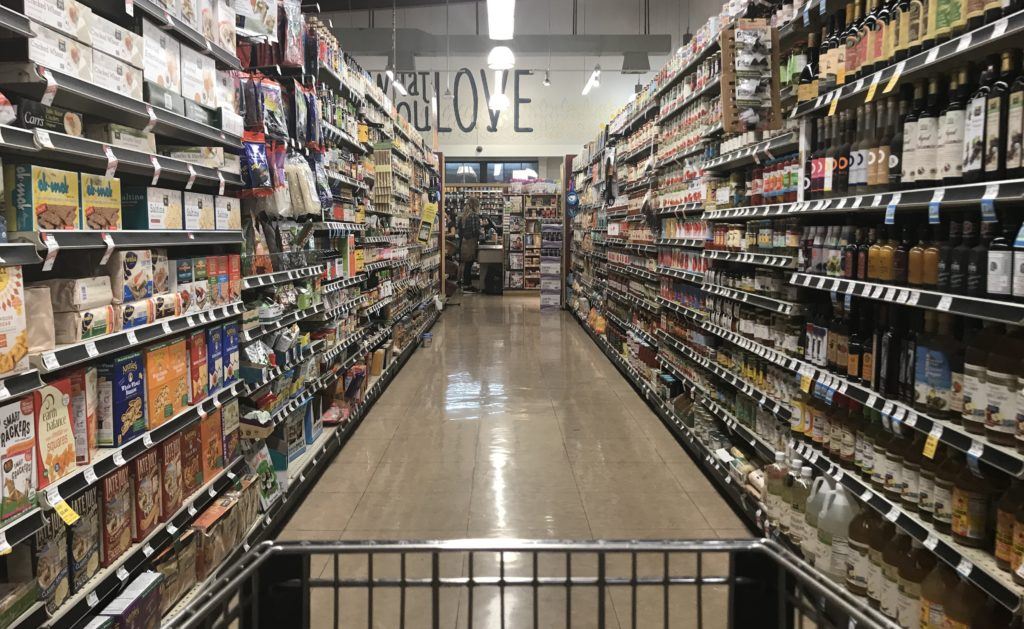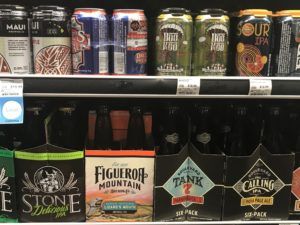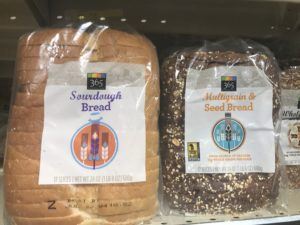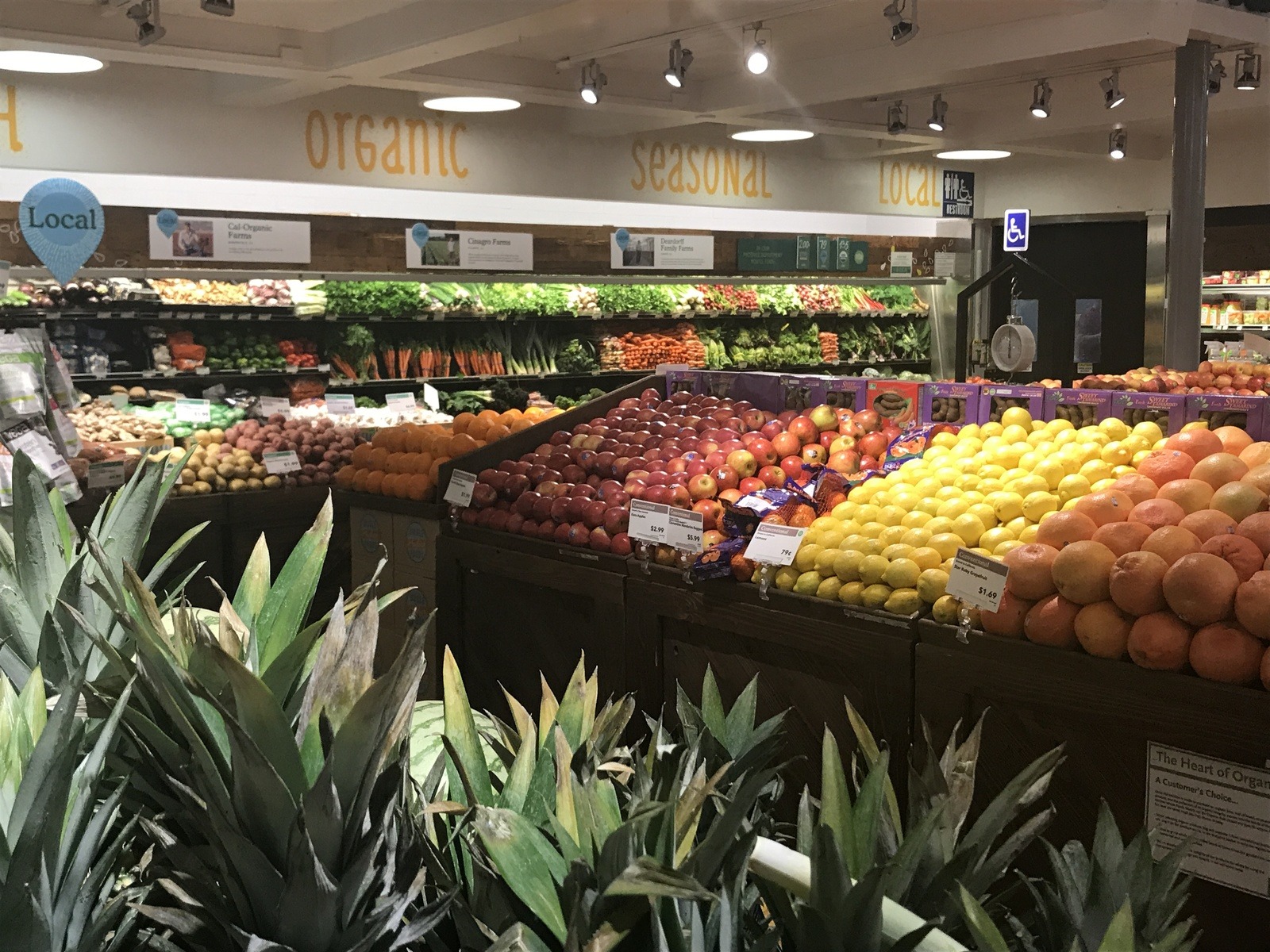
Greening your grocery cart
We crunched the numbers for you. Here’s how to make simple choices that fight climate change from your grocery cart.
Most of us visit a grocery store at least once a week. What we buy makes a difference in greenhouse gas emissions.
Unfortunately, foods don’t report the amount of emissions associated with them on labels. It would be great if they did—we could easily turn basic shopping decisions into a net positive for the planet.
With some choices, of course, the differences are small. But in other cases, potential CO2 reductions can be substantial. And occasionally the difference isn’t what you’d expect, perhaps not even in the direction you would expect.
Cynics might argue that one person’s purchases cannot possibly make a difference. But multiply those choices by 10 million and it becomes another matter altogether. Changing the behavior of 10 million people does not seem implausible—that’s just over three percent of the total United States population.
For each choice below we use what is called CO2 equivalents, because there are several different greenhouse gases. We then annualize the difference (“what if we made the same choice for the entire year”). And because it can be hard to visualize what it means to reduce yearly CO2 emissions by five kilograms, we converted kilograms of CO2 to what we call “tree equivalents.” In other words, how many trees would you need to take that amount of CO2 out of the atmosphere in one year? (Full data calculations)
A caveat: greenhouse gases are not the only concern. There is also health, animal welfare, water footprint and so on. But it is still inspiring to see how one person consistently making a few minor changes based on emissions in the marketplace could, in one year, do as much good for climate change as a small woodland. Over ten years, the same person could reduce emissions as much as a small forest.

Should I buy my beer in aluminum cans or in glass bottles?
If you have one six-pack of canned beer a week, or 52 six-packs a year, then you reduce CO2 emissions by 30 kg, or the equivalent of the CO2 absorbed by three trees in one year.
I am not willing to give up meat, but how much difference does it make if I give up beef and substitute chicken?
Each year Americans consume on average 23.3 kg of beef. If that average American substituted chicken for beef, then she or he would reduce CO2 emissions by more than 310 kg, which is the amount of CO2 absorbed by 31 trees a year.
Eggs from cage-free chickens are very popular because of animal welfare, but what about emissions?
There is really not much difference in emissions between cage and free-range eggs. In fact, if you consume approximately 250 eggs per year, always choosing eggs from caged chickens would reduce emissions by about 6 kg, or less than a tree’s worth of emissions reduction (0.6 of a tree to be precise)—perhaps not worth it at the expense of animal welfare.
What about wild-caught versus farm-raised salmon?
If you have a modest portion of salmon once a week (200g), and you consistently choose wild-caught salmon, then you can expect to reduce CO2 emissions by at least 48.7 kg—or the amount of CO2 absorbed by 4.87 trees in one year.
How much do we reduce emissions if we choose organic wine as opposed to non-organic wine?
This is impossible to answer generally—it all depends on type of wine, what kind of grapes are used and where they are grown, as well as whether the wine is organic or non-organic. One example of the difference it makes can be seen in choosing organic Chianti Colli Senesi red wine over non-organic Ribeiro white wine. A carbon-conscious Chianti drinker can feel proud of their green choice. Assuming consumption of two bottles per week, the organic Chianti spares the planet from 156 kg of CO2 compared to the non-organic white wine—the amount of CO2 absorbed by 15.6 trees in one year. The huge variability in wine production systems argues for much better analyses of wine emissions, and perhaps labeling.
How much do we reduce emissions if we choose grass-fed beef over conventional beef?
This is a tricky question. If the grass-fed beef is grown without regard for replenishing soil carbon (which is usually the case unless special management approaches are taken), then in terms of food-to-beef production, grain-fed is better for emissions because of the improved growth efficiency of the cattle. But this advantage can be overcome depending on the inputs required to produce the grains fed to the cattle and the way pastures are managed. In other words, beef production systems vary so much, that a simple dichotomy of grass-fed versus grain-fed is not that useful for predicting emissions. The most cited figure estimated that an annual diet of choosing grain-fed as opposed to grass-fed beef could reduce CO2 emissions by roughly 250 kg, or 25 trees.
How much do we reduce emissions if we drink tap water instead of bottled water?
Given that the average American adult drinks 58 gallons (219.554 liters) of water a year, a person can reduce CO2 emissions by 35.5 kg in one year if they choose tap water over bottled water, which is the amount of CO2 emissions absorbed by 3.5 trees in a year.
How much do we reduce emissions if we choose instant black coffee as opposed to ground black coffee?
Every day Americans drink an average of about 3 cups of coffee a day. If a person chooses instant black coffee over ground black coffee, he or she can reduce CO2 emissions by 52.6 kg a year—the equivalent that is absorbed by 5.3 trees.
How much do we reduce emissions if we choose reusable bags as opposed to plastic or paper bags?
If an average person uses reusable woven polypropylene bags instead of single-use, 100-percent-virgin plastic bags to shop for 70 grocery items every week, he or she can reduce CO2 emissions by 2.09 kg in a year, which is the amount of CO2 absorbed by 0.2 trees in one year. If that person chooses reusable bags over single-use paper bags, he or she can reduce CO2 emissions by as much as 39.3 kg or the amount of CO2 absorbed by 3.93 trees in one year.
How much do we reduce emissions if we choose homemade meals as opposed to frozen ready-made meals?
If a person cooks their own dinner of chicken, vegetables, and tomato paste instead of purchasing and microwaving the same frozen ready-made meal three times a week, that person can reduce CO2 emissions by 65.5 kg in a year, the equivalent of CO2 absorbed by 6.5 trees.

How much do we reduce emissions if we choose whole wheat instead of white bread?
Suppose you go through two loaves of bread a week. If you choose the whole wheat variety, you will reduce emissions by 7.3 kg, or .73 trees. Toasting bread and storing it in the refrigerator can also make a difference (but these factors are not included in the above comparison).
How much do we reduce emissions if we choose non-dairy instead of dairy milk?
Suppose a person drinks two gallons of milk every month. If that person chooses soy milk over dairy milk, that person can reduce emissions by 63.6 kg in a year—the equivalent of CO2 absorbed by 6.4 trees. Now, if that person opts for oat milk instead of dairy milk, he or she can reduce CO2 emissions even more, by 71.8 kg, or the CO2 absorbed by 7.2 trees.
How much do we reduce emissions if we choose reusable cotton roll towels over paper towels?
If a person dries their hands at least 10 times a day, and they choose to dry their hands with cotton roll towels instead of paper towels, he or she can expect to reduce CO2 emissions by at least 14.6 kg in one year, the equivalent absorbed by 1.4 trees.
How much do we reduce emissions if we choose a vegetarian lifestyle over the average diet?
A person can greatly reduce their carbon footprint by choosing a vegetarian (or even pescetarian) diet over the average diet. On a vegetarian diet, a person can reduce CO2 emissions by at least 140 kg in one year—the amount absorbed by 14 trees. If a person wants to eat fish, he or she can reduce CO2 emissions by at least 96 kg in one year, or 9.6 trees.
How much do we reduce emissions if we choose dark chocolate over milk chocolate?
Suppose a person eats one chocolate bar a day, and the choice is between dark chocolate and milk chocolate. If that person prefers dark chocolate over milk chocolate, he or she can reduce CO2 emissions by 34.6 kg in a year, or 3.5 trees.
What does it all add up to?
So if you drink instant coffee, eat chicken instead of beef, favor wild-caught salmon, avoid frozen meals, eat whole wheat bread, avoid bottled water, drink beer in cans instead of bottles, opt for soy milk, indulge in dark chocolate instead of milk chocolate, dry your hands with reusable towels and bring a reusable bag to the store, you have matched a pretty sizable woodlot of 70 trees. And these are but a handful of the choices you make at the grocery store.
If ten million people—again, a little over three percent of the U.S. population—made those same climate-smart choices, it would be the equivalent of half a billion trees. Clearly, small decisions add up.
Unfortunately, grocery choices are not labeled with “CO2 equivalents” in the same way they are all labeled with calories. Without drastically changing your lifestyle, imagine how much you could do for climate if emissions information were routinely associated with the products we buy?







